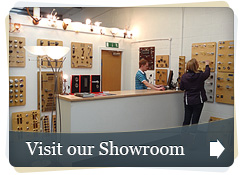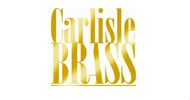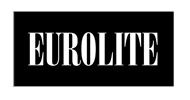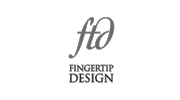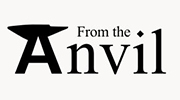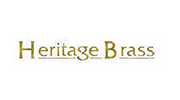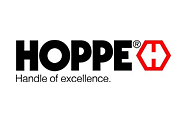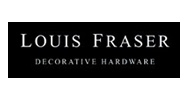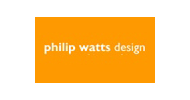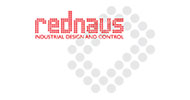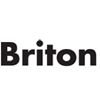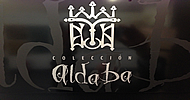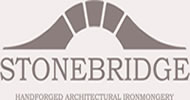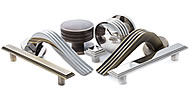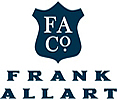Buying Guides
The following information is for guidance only. The door hardware industry is specialised because of the complexity of the products we sell and the variations available to suit different doors and applications. We are highly experienced and qualified Architectural Ironmongers. It may be better to call us rather than make a mistake. Let us help you to get your order right first time.
Product Finishes
Many of our ranges are handmade hand-finished specials and the finish WILL vary from one product to the next, even in different batches from the same manufacturer. We suggest you order in one hit rather than in lots to minimize this. Sand cast Brass and Bronze product will almost certainly have small surface imperfections and these should be seen as character rather than faults. The finishes shown in our website are for guidance only. We have done our best to represent the product finishes and in a great many cases done our own photography so you don't have to guess too much, but your product finish may vary from that shown to some degree. This is due to the photography process, the variations in the actual product referred to above and how your monitor displays our photograph. Finish Swatches are available for Croft, Rocky Mountain, Brassart and Frank Allart Ranges. Note that hand applied finishes may differ from batch to batch and even product to product. It is advisable to order all together.
We can offer no finish guarantee on products fitted in coastal or otherwise caustic environments.
Unless otherwise stated, finishes from Croft, Frank Allart (British Handmade), Brassart etc are unlaquered (Croft satin brass is an exception). This means that the product will very quickly patinate or can be kept clean to maintain it's initial finish.
Door Hinges
Door hinges are the most important and often the most overlooked Ironmongery item on your door. If your door hinges do not work properly, nothing else does.
Care must be taken to select the correct hinge based on your door type, construction, function and situation.
On our web site you will find two different categories of door hinge - Butt Hinges and Tee Hinges.
Many others exist for special applications. If what you require is not shown, please call us on 01606 888520 We definitely sell it!
Butt Hinges
Door Thickness, weight and Height are important here.
35mm thick doors usually require 75mm Butt Hinges and 44mm Doors usually require 100mm Butt Hinges.
We normally recommend 3 Butt Hinges on Doors up to 2100mm high and at least 4 above that.
If your Door is Fire Rated you must select a Butt Hinge with the relevant Fire Test.
Plain Bearing and Ball Bearing Butt Hinges are the modern standard and run very smoothly but we still sell the old Double Steel Washered DSW and Phosphor Bronze Washered Butt Hinges for light duty internal applications.
Tee Hinges
The general rule of thumb here is that the T Hinge should extend apx two thirds of the way across your door for the traditional look and correct strength.
These Hinges are frequently used on Ledged and Braced Doors which are non fire rated and not particularly heavy, so there are no real standards.
Often only two T Hinges are used but sometimes more if the door is heavier or the situation requires it. Often the smaller frame flap is cut into the frame and hidden by the Architrave on your frame.
Door Bolts
These are usually supplied "Straight" or "Necked". Sometimes a Necked Bolt is referred to as a "Cranked" Bolt.
Generally, straight bolts are used where the surfaces to be bolted together are reasonably flush like on the inside of an inward opening back door.
The bolt shoots into a "staple" the same shape as the bolt body.
Necked Bolts have a flat strike plate rather than a staple and tend be used where the bolt entry point is at right angles to the door. A good example would be the inside side of an outward opening pair of french doors, shooting up into the frame. Straight door bolts are also sometimes used with angled strike plates in the same situation as a necked door bolt just to confuse you.
Panic Bolts & Panic Latches
These are Critical Life Safety Devices. It will Probably be better to call us than select yourself if you are in ANY doubt. Some general rules follow but you should take direct advice from a qualified Architectural Ironmonger.
1. Look at where the device will be going and who will be using it. Forget what is currently on the door as it is probably out of date and possibly illegal. Don't let what is already there sway you.
2. Decide if the Fire Exit is an Emergency Exit or a Panic Exit. Very important. If all users are familiar with the location of and function of the device then it is probably an Emergency Exit and in this situation a Push Pad or Escape Lock can be used. If however the intended users are NOT officially familiar with the operation of, or location of the exit devices eg in a shop or pub, it is a Panic Exit and a cross bar type should be used so that the door will open if someone falls against it at any point across it's width.
3. Security. if you require low security a Latch type device will do. Higher Security is acheived by using a Bolt Type device.
4. Double Doors may be rebated. (a staggered draught seal built into the timber at the meeting point between the doors.) If your double doors are rebated you should buy a dedicated kit for this so that either door will open in a panic. Old fashioned Double Panic Bolts are now Illegal.
4. Finish and Function. "Touch Bar" panic Bolts are more attractive and operate far more smoothly and easily. Ours have Pullman Latches which work very precisely and smoothly. Briton and Exidor Panic Bolts are available in all colours as well as metalic finishes like Brass and Stainless Steel.
Door Closers
In exactly the same way as Panic Exit Devices, Door Closers are Critical life Safety Equipment and their selection should not be taken lightly - if a Fire Door is not closed it is not a fire door.
You need to select a door closer that will ensure that your fire door will close 100% of the time. A Door Closer's mechanical and/or electronic functionality is specified according to Door Sail Area, Function, Position and User Group. You then have to consider the type of Door closer you want from Floorsprings, Overhead Scissor Arm, Overhead Track Arm, Overhead Concealed, Jamb Mounted Concealed.
On this site we have only listed regularly used Scissor Arm and Track Arm Overhead Closers. If you require any other function or type of closer, please contact us. We DO sell it.
Door Locks
Two basic fitments of Locks and Latches exist - "Mortice" and "Rim".
Mortice Locks or Latches are cut into the edge of a door and Rim Locks are fitted to the face of a door.
Operation of a door lock is usually by key but can be electronic. Your key either goes directly into the lock through a keyhole in the door and operates levers inside, or goes into a cylinder or barrel that sticks out of the door.
If you have, or want the cylinder type, you need to be aware of the shape of cylinder you require.
The more modern shape is Euro Profile which looks like a large keyhole shape.
The older design is Oval profile which is, well, Oval...
The profile of the Cylinder effects the type of lock case and your choice of handles or escutcheons. See separate section for cylinders.
Mortice Locks & Latches
The basic types of Mortice-fit are Latch, Deadlock, Nightlatch and Sashlock.
Case Depth is the overall depth of the lock body.
Backset is the distance from the edge of the door to the middle of the keyhole or middle of the latch spindle follower.
Mortice Latches have only a sprung bevelled bolt which is operable by Lever Handles or Door Knobs.
Mortice Deadlocks have only a Dead Bolt which is operable by Key - usually Three Lever for low security or Five Lever for High Security Insurance purposes.
Cylinder versions also exist and the security level of a cylinder lock depends on the design/type of cylinder.
Mortice Sashlocks have a combination of Latch Bolt and Dead Bolt - one above the other in an upright sashlock.
These traditionally are operated by Lever Handles on a Backplate with a Keyhole cut into it.
Modern versions of Sashlocks with Cylinder operation require Backplates with the relevant Cylinder Profile cutout - usually 63mm or 76mm deep.
Bathroom Locks are like a Sashlock but the Deadbolt is thrown by a Bathroom Turn and Release.
This has a spindle bar which passes throuch the door like a pair of Lever Handles does. The bathroom turn spindles are usually 5mm but some locks have a 7, 8 or 9mm spindle. All locks and turns on this site are 5mm.
When Using Door Knobs we recommend at least a 100mm deep lock or latch so that your Knobs are set way back into the door. This avoids finger trap situations and is more aesthetically pleasing.
Lever Handles can have locks as shallow as 63mm because the Lever Handle sets your hand back further than a knob.
Horizontal Locks and Latches are ideal for use with door knobs. These are 127mm or 152mm deep and are the traditional Lock for Door Knobs. The Knob Handle and Keyhole Escutcheon are in line Horizontally.
For insurance purposes, you must usually use locks with a MINIMUM of the BS3621 Kitemark. Usually a 5 lever lock is required. We can guide you further if you are unhappy with having to use a Lever Lock - please call us on 01606 888520
Cylinder Locks
Cylinders are sometimes called Lock Barrels or Lock Tumblers. These pass through your door and operate the lock in the middle of the door. It is the cylinder that accepts or rejects the key, not the lock body. You can change your key simply by taking out the cylinder and putting a new one in.
If you want Key operation both sides, you order a Double Cylinder.
Key operation on one side only is a Single Cylinder.
Key operation one side and a Thumbturn on the other is a cylinder and turn. This is used on fire escape routes or anywhere where escape if locked in is required.
European Profile or Euro Profile Cylinders are Keyhole shaped. These are the most modern type. Older Oval shaped cylinders are still available.
Bear in mind the thickness of your door PLUS the thickness of any Lever Handle Backplate or Escutcheon when selecting your cylinder Length.
If the Mortice Lock or Multi Point Lock is not set right in the middle of the door you may require an offset cylinder which is longer one side than the other to compensate for this. Locks for UPVC Doors or Over Rebated Doors often have this issue.
Specialist Anti Barricade Cylinders, Classroom Function Cylinders and Clutch Cylinders are available as specials. Please contact us on 01606 888520 or email us at sales@cheshirehardware.com with your enquiry.
Masterkeying / Special Keying / Suiting
The terms "Suited" or "Suited Locks" are very confusing because they can mean so many different things. The correct terms clear things up a lot.
"Master Keyed Locks" are actually quite simple. Usually all the locks in a system are on different Keys but a Master Key can also open all of them. Ideal in an office block or school.
"Keyed Alike Locks" are exactly that. All locks in the system are Keyed Alike and all work from the same key. Ideal for two locks on the same door, the locks around your house or all the bin stores in a shopping centre, etc.
These Pass Groups can also be part of a larger Master key System referred to above.
"Common Keyed" An ideal place for this is an Apartment Block or Student Accomodation. All apartments are on different keys of course, but those same keys ALL operate the front door too so that the residents dont have to carry two keys around.
Again, these doors can all be under master key if required by the landlord. The Landlord's master key then opens every door.
CYLINDER SECURITY:
Very Important. Many standard 5 pin cylinders are easy to "bump". Lock Bumping or Lock Jumping is on the increase in the UK and leaves no traces of forced entry. This renders your insurance totally invalid! It is really worth spending more money and getting a 15 Pin High Security Anti Bump Cylinder which will better resist this method of forced entry.
Lock Snapping is also on the increase in the UK. The thief snaps the Cylinder in half, exposing the lock internals which are then very easy to manipulate. Our 15 pin Anti Bump and Snap Cylinders resist this method of attack far better than a standard unit.
Think about how much your home contents are worth. The extra expense of a High Security Cylinder Lock pales into insignifcance when it is looked at this way.
Door Lever Handles
Lever Handles do not usually come with latches or locks. You need to select the correct Locks or Latches to go with your Door Handles.
There are two main styles of Lever Handle - Lever on Rose is the more modern style and Lever on Backplate is the more traditional style.
Lever Handles on Rose usually bolt through the door to the other handle to provide a very secure fixing, but you should ensure that your Lock or Latch has the correct holes in it to allow the bolts to pass through.
Lever Handles on Backplate usually just screw to the door.
When buying Lever Handles on a Rose for a locking situation, you will also need to buy Lock Escutcheons or Bathroom Turn sets to work with whatever kind of Lock you have or choose.
These are shown as related products on all of our Lever on Rose designs.
Our Bathroom Turn Snibs all have a 5mm Spindle, and our Bathroom Locks have a 5mm Spindle Follower to accept this. Ensure that if you are buying handles and turns to work with your existing locks that they can accept the dimensions and fixing methods.
When buying Lever Handles on Backplate, you need to decide is whether you will be using it with a latch, lock or bathroom lock.
For a latch, you need the plain backplate version of your desired style.
For a lock, you will need a backplate with a keyhole profile to match the type of lock you will be using - standard keyhole, euro profile or oval profile.
For a bathroom lock, you will need the bathroom lock backplate which usually includes the turn & release fittings.
Note that many quality lever handles come without any spring assistance. We can provide suitable locks and latches for these. Fitted to weak or old latches the handles may well droop or have a lot of play. This is not a fault in the handles. If this is the case you need to upgrade your latches or locks.
Door Knobs
Door knobs do not come with latches or locks. You need to select the correct Locks or Latches to go with your Door Knob Handles.
Door Knob Handles are split into two main groups: for use with a Rim Lock and for use with a Mortice Lock.
The main difference is that Rim Furniture has only one Rose for the timber side while the inside knob rides on the lock body itself.
Mortice Knobs have two Roses because the lock is morticed into the door.
Some Mortice Knobs come on a backplate for an upright mortice lock.
You should ideally use a minimum of a 100mm deep lock case or latch with door knobs, so that finger trap situations are avoided. Ideally you should use a 127mm or 152mm Horizontal Lock with door knobs on rose.
When buying knob furniture you will usually also need to buy Lock Escutcheons or Bathroom Turn sets to work with whatever kind of Lock you have or choose. These are shown as related products.
Our Bathroom Turn Snibs all have a 5mm Spindle, and our Bathroom Locks have a 5mm Spindle Follower to accept this.
Please ensure that if you are buying handles and turns to work with your existing locks that they can accept the dimensions and fixing methods.
Pull Handles
Pull Handles are usually either fixed directly to the door by screws or bolted from the other side. If you use the Bolt Through Pull Handle variety you will need a push plate or finger plate to cover the bolt heads.
MATERIALS AND CARE OF FINISHES
Note that the below applies to hardware fitted in areas with normal clean inland atmospheres. No guarantee can be given that products will not break down in seaside locations or other caustic environments. In fact, expect them to!
Laquered Brass Products
Our products are protected by the most advanced lacquer available and under normal circumstances should give many years of service. They should be cleaned with a cloth moistened with soapy water or alternatively wiped over with a soft cloth with beeswax.
UNDER NO CIRCUMSTANCES USE ANY FORM OF METAL CLEANER OR AEROSOL SPRAYS.
However, after a period of time the lacquer coating, especially on external fittings, can suffer a possible breakdown. Therefore, the life of the lacquer is beyond the manufacturer's control and cannot be guaranteed. When the lacquer coating has broken down, remove the brass fittings and coat using a soft brush with acetone thinner e.g. "Nitramores" according to the manufacturer's instructions. Completely dry the product using a soft cloth and metal polish, such as "Brasso" or "Duraglit". At this stage the product can either be re-lacquered or polished as and when required.
A fresh coat of lacquer may be applied, but we strongly recommend that, especially for external use, you should leave the item unlacquered and care for it with Brasso. All lacqered brass items require regular cleaning with non-abrasive wax polish.
Unlaquered Products
Certain brass and Bronze products are unlaquered. These will obviously be more prone to atmospheric corrosion but will stay beautiful if kept clean as per manufacturers instructions. Sometimes a coat of beeswax will help maintain the shine. This is available from us.
Chrome and Nickel Plated Products
Our quality chrome and nickel products are virtually maintenance free. However, deposits will accumulate especially on external fittings. We therefore recommend regular cleaning with a soft cloth and non-abrasive wax polish. This will ensure the original appearance is maintained.
Stainless Brass PVD
These products have an advanced vacuum treated process and we can offer a full 25 year replacement guarantee with the Exclusive Stainless Brass Finish other than in coastal areas.
The technology involved in this process renders this surface impervious to damage in normal use including oxidation, wear and abrasion.
We recommend the removal of suface dirt by dusting with a soft cloth. Stubborn stains can be removed with the use of white spirit or similar spirit based products.
CLEANING AND CARING FOR STAINLESS STEEL
Why Clean Stainless Steel?
Stainless Steels corrodes if it is not looked after properly or is in a caustic environment. Even the best grades like 316. We cannot stress this enough! It need to be cleaned for aesthetic considerations and to preserve corrosion resistance. Stainless steel is protected from corrosion by a thin layer of chromium oxide. Oxygen from the atmosphere combines with the chromium in the stainless steel to form this passive chromium oxide film that protects from further corrosion. Any contamination of the surface by dirt, or other material hinders this passivation process and traps corrosive agents, reducing corrosion protection. Thus some form of routine cleaning is necessary to preserve the appearance and integrity of the surface. Stainless steels are easily cleaned by many different methods. They actually thrive with frequent cleaning and, unlike some other materials, it is impossible to 'wear out' stainless steel by excessive cleaning. Stainless Steel performs best when clean - cleanliness is essential for maximum resistance to corrosion. Note also that some components on an item advertised as stainless steel will not be made out of stainless steel. (Springs for instance will usually be made from mild steel.) The "stainless steel" term refers to the visible finish.
Stainless Steel Maintenance Program:
All exposed stainless steel surfaces should be wiped over with a clean cloth and warm water with a mild detergent on a frequent and routine basis. Avoid cleaners with salt.
For more stubborn dirt or stains use mild, non-scratching abrasing powders such as typical household cleaners as long as they do not contain salt or certain chemicals. These can be used with warm water, bristle brushes, sponges or clean cloths. For more aggressive cleaning a small amount of vinegar can be added to the powder.
Carbon steel brushes and steel wool should be avoided as they may leave particles embedded in the surface, which can lead to rusting.
Cleaning should always be immediately followed by rinsing in clean hot water and the surface then wiped completely with a dry towel.
The recommendation for routine cleaning is once a month and more often in areas subject to heavy soiling corrosive air salty air or frequent use.
Where routine maintenance is considered a pre-requisite of compliance with an associated guarantee a 'Maintenance Log' should be kept for each installation.
Our usual standard for Stainless Steel Plates is Grade 304. Budget "contract" plates in grade 430 are only suitable for totally dry environments and should only be cleaned with a soft dry cloth. We strongly recommend 304 as a minimum grade. 316 is the best grade but even 316 can corrode if not maintained.
Rocky Mountain patina finishes can be removed by harsh cleaning products and make up etc so particularly with plumbing ranges we suggest light patina finishes to minimise the effects of this. Rocky Mountain finishes cannot be guaranteed. You should expect them to change with time and use.
Product Finishes
Many of our ranges are handmade hand-finished specials and the finish WILL vary from one product to the next, even in different batches from the same manufacturer. We suggest you order in one hit rather than in lots to minimize this. Sand cast Brass and Bronze product will almost certainly have small surface imperfections and these should be seen as character rather than faults. The finishes shown in our website are for guidance only. We have done our best to represent the product finishes and in a great many cases done our own photography so you don't have to guess too much, but your product finish may vary from that shown to some degree. This is due to the photography process, the variations in the actual product referred to above and how your monitor displays our photograph. Finish Swatches are available for Croft, Rocky Mountain, Brassart and Frank Allart Ranges. Note that hand applied finishes may differ from batch to batch and even product to product. It is advisable to order all together.
We can offer no finish guarantee on products fitted in coastal or otherwise caustic environments.
Unless otherwise stated, finishes from Croft, Frank Allart (British Handmade), Brassart etc are unlaquered (Croft satin brass is an exception). This means that the product will very quickly patinate or can be kept clean to maintain it's initial finish.
Door Hinges
Door hinges are the most important and often the most overlooked Ironmongery item on your door. If your door hinges do not work properly, nothing else does.
Care must be taken to select the correct hinge based on your door type, construction, function and situation.
On our web site you will find two different categories of door hinge - Butt Hinges and Tee Hinges.
Many others exist for special applications. If what you require is not shown, please call us on 01606 888520 We definitely sell it!
Butt Hinges
Door Thickness, weight and Height are important here.
35mm thick doors usually require 75mm Butt Hinges and 44mm Doors usually require 100mm Butt Hinges.
We normally recommend 3 Butt Hinges on Doors up to 2100mm high and at least 4 above that.
If your Door is Fire Rated you must select a Butt Hinge with the relevant Fire Test.
Plain Bearing and Ball Bearing Butt Hinges are the modern standard and run very smoothly but we still sell the old Double Steel Washered DSW and Phosphor Bronze Washered Butt Hinges for light duty internal applications.
Tee Hinges
The general rule of thumb here is that the T Hinge should extend apx two thirds of the way across your door for the traditional look and correct strength.
These Hinges are frequently used on Ledged and Braced Doors which are non fire rated and not particularly heavy, so there are no real standards.
Often only two T Hinges are used but sometimes more if the door is heavier or the situation requires it. Often the smaller frame flap is cut into the frame and hidden by the Architrave on your frame.
Door Bolts
These are usually supplied "Straight" or "Necked". Sometimes a Necked Bolt is referred to as a "Cranked" Bolt.
Generally, straight bolts are used where the surfaces to be bolted together are reasonably flush like on the inside of an inward opening back door.
The bolt shoots into a "staple" the same shape as the bolt body.
Necked Bolts have a flat strike plate rather than a staple and tend be used where the bolt entry point is at right angles to the door. A good example would be the inside side of an outward opening pair of french doors, shooting up into the frame. Straight door bolts are also sometimes used with angled strike plates in the same situation as a necked door bolt just to confuse you.
Panic Bolts & Panic Latches
These are Critical Life Safety Devices. It will Probably be better to call us than select yourself if you are in ANY doubt. Some general rules follow but you should take direct advice from a qualified Architectural Ironmonger.
1. Look at where the device will be going and who will be using it. Forget what is currently on the door as it is probably out of date and possibly illegal. Don't let what is already there sway you.
2. Decide if the Fire Exit is an Emergency Exit or a Panic Exit. Very important. If all users are familiar with the location of and function of the device then it is probably an Emergency Exit and in this situation a Push Pad or Escape Lock can be used. If however the intended users are NOT officially familiar with the operation of, or location of the exit devices eg in a shop or pub, it is a Panic Exit and a cross bar type should be used so that the door will open if someone falls against it at any point across it's width.
3. Security. if you require low security a Latch type device will do. Higher Security is acheived by using a Bolt Type device.
4. Double Doors may be rebated. (a staggered draught seal built into the timber at the meeting point between the doors.) If your double doors are rebated you should buy a dedicated kit for this so that either door will open in a panic. Old fashioned Double Panic Bolts are now Illegal.
4. Finish and Function. "Touch Bar" panic Bolts are more attractive and operate far more smoothly and easily. Ours have Pullman Latches which work very precisely and smoothly. Briton and Exidor Panic Bolts are available in all colours as well as metalic finishes like Brass and Stainless Steel.
Door Closers
In exactly the same way as Panic Exit Devices, Door Closers are Critical life Safety Equipment and their selection should not be taken lightly - if a Fire Door is not closed it is not a fire door.
You need to select a door closer that will ensure that your fire door will close 100% of the time. A Door Closer's mechanical and/or electronic functionality is specified according to Door Sail Area, Function, Position and User Group. You then have to consider the type of Door closer you want from Floorsprings, Overhead Scissor Arm, Overhead Track Arm, Overhead Concealed, Jamb Mounted Concealed.
On this site we have only listed regularly used Scissor Arm and Track Arm Overhead Closers. If you require any other function or type of closer, please contact us. We DO sell it.
Door Locks
Two basic fitments of Locks and Latches exist - "Mortice" and "Rim".
Mortice Locks or Latches are cut into the edge of a door and Rim Locks are fitted to the face of a door.
Operation of a door lock is usually by key but can be electronic. Your key either goes directly into the lock through a keyhole in the door and operates levers inside, or goes into a cylinder or barrel that sticks out of the door.
If you have, or want the cylinder type, you need to be aware of the shape of cylinder you require.
The more modern shape is Euro Profile which looks like a large keyhole shape.
The older design is Oval profile which is, well, Oval...
The profile of the Cylinder effects the type of lock case and your choice of handles or escutcheons. See separate section for cylinders.
Mortice Locks & Latches
The basic types of Mortice-fit are Latch, Deadlock, Nightlatch and Sashlock.
Case Depth is the overall depth of the lock body.
Backset is the distance from the edge of the door to the middle of the keyhole or middle of the latch spindle follower.
Mortice Latches have only a sprung bevelled bolt which is operable by Lever Handles or Door Knobs.
Mortice Deadlocks have only a Dead Bolt which is operable by Key - usually Three Lever for low security or Five Lever for High Security Insurance purposes.
Cylinder versions also exist and the security level of a cylinder lock depends on the design/type of cylinder.
Mortice Sashlocks have a combination of Latch Bolt and Dead Bolt - one above the other in an upright sashlock.
These traditionally are operated by Lever Handles on a Backplate with a Keyhole cut into it.
Modern versions of Sashlocks with Cylinder operation require Backplates with the relevant Cylinder Profile cutout - usually 63mm or 76mm deep.
Bathroom Locks are like a Sashlock but the Deadbolt is thrown by a Bathroom Turn and Release.
This has a spindle bar which passes throuch the door like a pair of Lever Handles does. The bathroom turn spindles are usually 5mm but some locks have a 7, 8 or 9mm spindle. All locks and turns on this site are 5mm.
When Using Door Knobs we recommend at least a 100mm deep lock or latch so that your Knobs are set way back into the door. This avoids finger trap situations and is more aesthetically pleasing.
Lever Handles can have locks as shallow as 63mm because the Lever Handle sets your hand back further than a knob.
Horizontal Locks and Latches are ideal for use with door knobs. These are 127mm or 152mm deep and are the traditional Lock for Door Knobs. The Knob Handle and Keyhole Escutcheon are in line Horizontally.
For insurance purposes, you must usually use locks with a MINIMUM of the BS3621 Kitemark. Usually a 5 lever lock is required. We can guide you further if you are unhappy with having to use a Lever Lock - please call us on 01606 888520
Cylinder Locks
Cylinders are sometimes called Lock Barrels or Lock Tumblers. These pass through your door and operate the lock in the middle of the door. It is the cylinder that accepts or rejects the key, not the lock body. You can change your key simply by taking out the cylinder and putting a new one in.
If you want Key operation both sides, you order a Double Cylinder.
Key operation on one side only is a Single Cylinder.
Key operation one side and a Thumbturn on the other is a cylinder and turn. This is used on fire escape routes or anywhere where escape if locked in is required.
European Profile or Euro Profile Cylinders are Keyhole shaped. These are the most modern type. Older Oval shaped cylinders are still available.
Bear in mind the thickness of your door PLUS the thickness of any Lever Handle Backplate or Escutcheon when selecting your cylinder Length.
If the Mortice Lock or Multi Point Lock is not set right in the middle of the door you may require an offset cylinder which is longer one side than the other to compensate for this. Locks for UPVC Doors or Over Rebated Doors often have this issue.
Specialist Anti Barricade Cylinders, Classroom Function Cylinders and Clutch Cylinders are available as specials. Please contact us on 01606 888520 or email us at sales@cheshirehardware.com with your enquiry.
Masterkeying / Special Keying / Suiting
The terms "Suited" or "Suited Locks" are very confusing because they can mean so many different things. The correct terms clear things up a lot.
"Master Keyed Locks" are actually quite simple. Usually all the locks in a system are on different Keys but a Master Key can also open all of them. Ideal in an office block or school.
"Keyed Alike Locks" are exactly that. All locks in the system are Keyed Alike and all work from the same key. Ideal for two locks on the same door, the locks around your house or all the bin stores in a shopping centre, etc.
These Pass Groups can also be part of a larger Master key System referred to above.
"Common Keyed" An ideal place for this is an Apartment Block or Student Accomodation. All apartments are on different keys of course, but those same keys ALL operate the front door too so that the residents dont have to carry two keys around.
Again, these doors can all be under master key if required by the landlord. The Landlord's master key then opens every door.
CYLINDER SECURITY:
Very Important. Many standard 5 pin cylinders are easy to "bump". Lock Bumping or Lock Jumping is on the increase in the UK and leaves no traces of forced entry. This renders your insurance totally invalid! It is really worth spending more money and getting a 15 Pin High Security Anti Bump Cylinder which will better resist this method of forced entry.
Lock Snapping is also on the increase in the UK. The thief snaps the Cylinder in half, exposing the lock internals which are then very easy to manipulate. Our 15 pin Anti Bump and Snap Cylinders resist this method of attack far better than a standard unit.
Think about how much your home contents are worth. The extra expense of a High Security Cylinder Lock pales into insignifcance when it is looked at this way.
Door Lever Handles
Lever Handles do not usually come with latches or locks. You need to select the correct Locks or Latches to go with your Door Handles.
There are two main styles of Lever Handle - Lever on Rose is the more modern style and Lever on Backplate is the more traditional style.
Lever Handles on Rose usually bolt through the door to the other handle to provide a very secure fixing, but you should ensure that your Lock or Latch has the correct holes in it to allow the bolts to pass through.
Lever Handles on Backplate usually just screw to the door.
When buying Lever Handles on a Rose for a locking situation, you will also need to buy Lock Escutcheons or Bathroom Turn sets to work with whatever kind of Lock you have or choose.
These are shown as related products on all of our Lever on Rose designs.
Our Bathroom Turn Snibs all have a 5mm Spindle, and our Bathroom Locks have a 5mm Spindle Follower to accept this. Ensure that if you are buying handles and turns to work with your existing locks that they can accept the dimensions and fixing methods.
When buying Lever Handles on Backplate, you need to decide is whether you will be using it with a latch, lock or bathroom lock.
For a latch, you need the plain backplate version of your desired style.
For a lock, you will need a backplate with a keyhole profile to match the type of lock you will be using - standard keyhole, euro profile or oval profile.
For a bathroom lock, you will need the bathroom lock backplate which usually includes the turn & release fittings.
Note that many quality lever handles come without any spring assistance. We can provide suitable locks and latches for these. Fitted to weak or old latches the handles may well droop or have a lot of play. This is not a fault in the handles. If this is the case you need to upgrade your latches or locks.
Door Knobs
Door knobs do not come with latches or locks. You need to select the correct Locks or Latches to go with your Door Knob Handles.
Door Knob Handles are split into two main groups: for use with a Rim Lock and for use with a Mortice Lock.
The main difference is that Rim Furniture has only one Rose for the timber side while the inside knob rides on the lock body itself.
Mortice Knobs have two Roses because the lock is morticed into the door.
Some Mortice Knobs come on a backplate for an upright mortice lock.
You should ideally use a minimum of a 100mm deep lock case or latch with door knobs, so that finger trap situations are avoided. Ideally you should use a 127mm or 152mm Horizontal Lock with door knobs on rose.
When buying knob furniture you will usually also need to buy Lock Escutcheons or Bathroom Turn sets to work with whatever kind of Lock you have or choose. These are shown as related products.
Our Bathroom Turn Snibs all have a 5mm Spindle, and our Bathroom Locks have a 5mm Spindle Follower to accept this.
Please ensure that if you are buying handles and turns to work with your existing locks that they can accept the dimensions and fixing methods.
Pull Handles
Pull Handles are usually either fixed directly to the door by screws or bolted from the other side. If you use the Bolt Through Pull Handle variety you will need a push plate or finger plate to cover the bolt heads.
MATERIALS AND CARE OF FINISHES
Note that the below applies to hardware fitted in areas with normal clean inland atmospheres. No guarantee can be given that products will not break down in seaside locations or other caustic environments. In fact, expect them to!
Laquered Brass Products
Our products are protected by the most advanced lacquer available and under normal circumstances should give many years of service. They should be cleaned with a cloth moistened with soapy water or alternatively wiped over with a soft cloth with beeswax.
UNDER NO CIRCUMSTANCES USE ANY FORM OF METAL CLEANER OR AEROSOL SPRAYS.
However, after a period of time the lacquer coating, especially on external fittings, can suffer a possible breakdown. Therefore, the life of the lacquer is beyond the manufacturer's control and cannot be guaranteed. When the lacquer coating has broken down, remove the brass fittings and coat using a soft brush with acetone thinner e.g. "Nitramores" according to the manufacturer's instructions. Completely dry the product using a soft cloth and metal polish, such as "Brasso" or "Duraglit". At this stage the product can either be re-lacquered or polished as and when required.
A fresh coat of lacquer may be applied, but we strongly recommend that, especially for external use, you should leave the item unlacquered and care for it with Brasso. All lacqered brass items require regular cleaning with non-abrasive wax polish.
Unlaquered Products
Certain brass and Bronze products are unlaquered. These will obviously be more prone to atmospheric corrosion but will stay beautiful if kept clean as per manufacturers instructions. Sometimes a coat of beeswax will help maintain the shine. This is available from us.
Chrome and Nickel Plated Products
Our quality chrome and nickel products are virtually maintenance free. However, deposits will accumulate especially on external fittings. We therefore recommend regular cleaning with a soft cloth and non-abrasive wax polish. This will ensure the original appearance is maintained.
Stainless Brass PVD
These products have an advanced vacuum treated process and we can offer a full 25 year replacement guarantee with the Exclusive Stainless Brass Finish other than in coastal areas.
The technology involved in this process renders this surface impervious to damage in normal use including oxidation, wear and abrasion.
We recommend the removal of suface dirt by dusting with a soft cloth. Stubborn stains can be removed with the use of white spirit or similar spirit based products.
CLEANING AND CARING FOR STAINLESS STEEL
Why Clean Stainless Steel?
Stainless Steels corrodes if it is not looked after properly or is in a caustic environment. Even the best grades like 316. We cannot stress this enough! It need to be cleaned for aesthetic considerations and to preserve corrosion resistance. Stainless steel is protected from corrosion by a thin layer of chromium oxide. Oxygen from the atmosphere combines with the chromium in the stainless steel to form this passive chromium oxide film that protects from further corrosion. Any contamination of the surface by dirt, or other material hinders this passivation process and traps corrosive agents, reducing corrosion protection. Thus some form of routine cleaning is necessary to preserve the appearance and integrity of the surface. Stainless steels are easily cleaned by many different methods. They actually thrive with frequent cleaning and, unlike some other materials, it is impossible to 'wear out' stainless steel by excessive cleaning. Stainless Steel performs best when clean - cleanliness is essential for maximum resistance to corrosion. Note also that some components on an item advertised as stainless steel will not be made out of stainless steel. (Springs for instance will usually be made from mild steel.) The "stainless steel" term refers to the visible finish.
Stainless Steel Maintenance Program:
All exposed stainless steel surfaces should be wiped over with a clean cloth and warm water with a mild detergent on a frequent and routine basis. Avoid cleaners with salt.
For more stubborn dirt or stains use mild, non-scratching abrasing powders such as typical household cleaners as long as they do not contain salt or certain chemicals. These can be used with warm water, bristle brushes, sponges or clean cloths. For more aggressive cleaning a small amount of vinegar can be added to the powder.
Carbon steel brushes and steel wool should be avoided as they may leave particles embedded in the surface, which can lead to rusting.
Cleaning should always be immediately followed by rinsing in clean hot water and the surface then wiped completely with a dry towel.
The recommendation for routine cleaning is once a month and more often in areas subject to heavy soiling corrosive air salty air or frequent use.
Where routine maintenance is considered a pre-requisite of compliance with an associated guarantee a 'Maintenance Log' should be kept for each installation.
Our usual standard for Stainless Steel Plates is Grade 304. Budget "contract" plates in grade 430 are only suitable for totally dry environments and should only be cleaned with a soft dry cloth. We strongly recommend 304 as a minimum grade. 316 is the best grade but even 316 can corrode if not maintained.
Rocky Mountain patina finishes can be removed by harsh cleaning products and make up etc so particularly with plumbing ranges we suggest light patina finishes to minimise the effects of this. Rocky Mountain finishes cannot be guaranteed. You should expect them to change with time and use.


